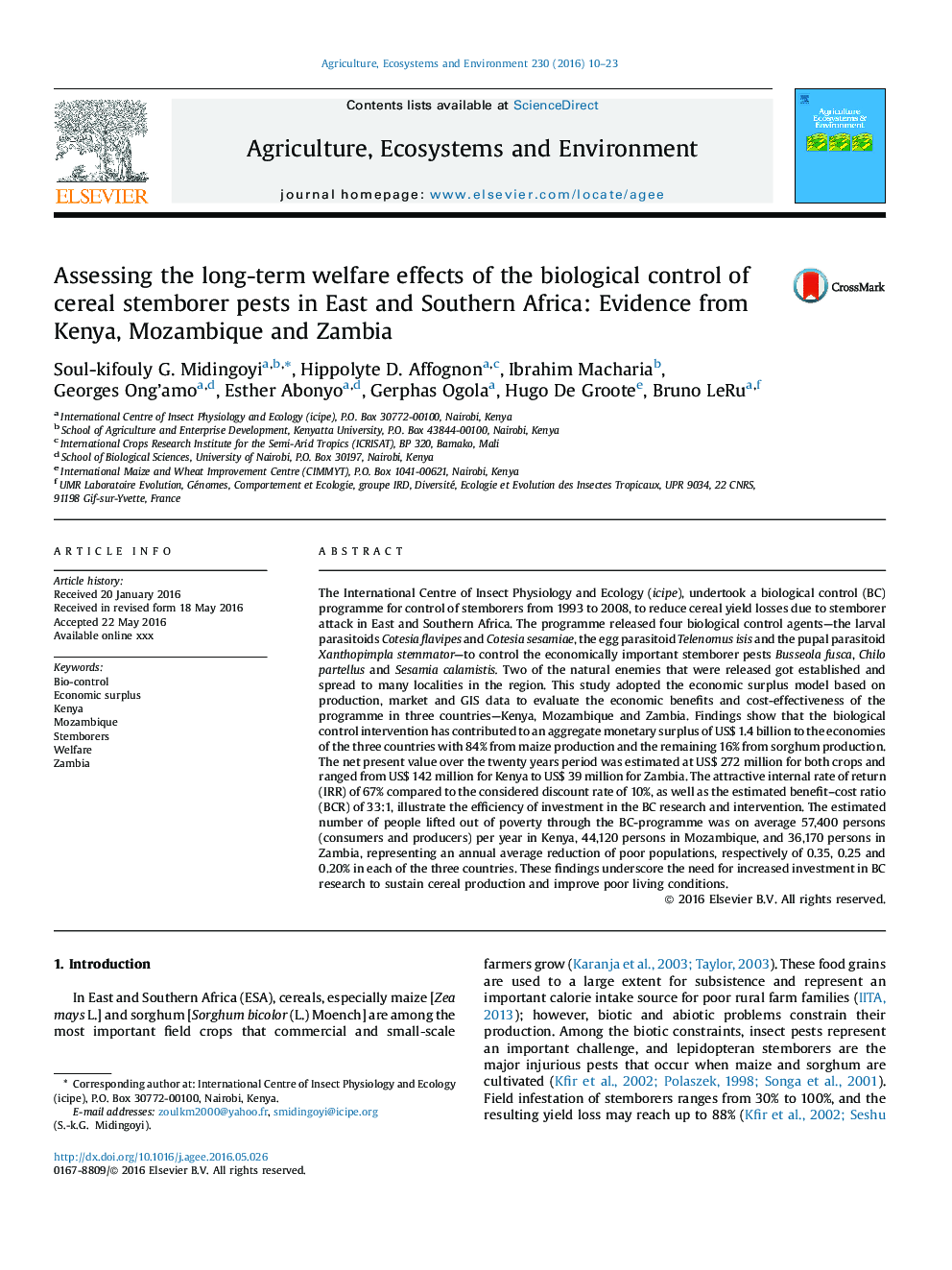| کد مقاله | کد نشریه | سال انتشار | مقاله انگلیسی | نسخه تمام متن |
|---|---|---|---|---|
| 8487371 | 1552022 | 2016 | 14 صفحه PDF | دانلود رایگان |
عنوان انگلیسی مقاله ISI
Assessing the long-term welfare effects of the biological control of cereal stemborer pests in East and Southern Africa: Evidence from Kenya, Mozambique and Zambia
ترجمه فارسی عنوان
ارزیابی اثرات رفاهی درازمدت کنترل بیولوژیکی آفات ساقه غلات در شرق و جنوب آفریقا: شواهد از کنیا، موزامبیک و زامبیا
دانلود مقاله + سفارش ترجمه
دانلود مقاله ISI انگلیسی
رایگان برای ایرانیان
کلمات کلیدی
کنترل بیولوژیک، مازاد اقتصادی، کنیا، موزامبیک، ستارگان رفاه، زامبیا،
موضوعات مرتبط
علوم زیستی و بیوفناوری
علوم کشاورزی و بیولوژیک
علوم زراعت و اصلاح نباتات
چکیده انگلیسی
The International Centre of Insect Physiology and Ecology (icipe), undertook a biological control (BC) programme for control of stemborers from 1993 to 2008, to reduce cereal yield losses due to stemborer attack in East and Southern Africa. The programme released four biological control agents-the larval parasitoids Cotesia flavipes and Cotesia sesamiae, the egg parasitoid Telenomus isis and the pupal parasitoid Xanthopimpla stemmator-to control the economically important stemborer pests Busseola fusca, Chilo partellus and Sesamia calamistis. Two of the natural enemies that were released got established and spread to many localities in the region. This study adopted the economic surplus model based on production, market and GIS data to evaluate the economic benefits and cost-effectiveness of the programme in three countries-Kenya, Mozambique and Zambia. Findings show that the biological control intervention has contributed to an aggregate monetary surplus of US$ 1.4 billion to the economies of the three countries with 84% from maize production and the remaining 16% from sorghum production. The net present value over the twenty years period was estimated at US$ 272 million for both crops and ranged from US$ 142 million for Kenya to US$ 39 million for Zambia. The attractive internal rate of return (IRR) of 67% compared to the considered discount rate of 10%, as well as the estimated benefit-cost ratio (BCR) of 33:1, illustrate the efficiency of investment in the BC research and intervention. The estimated number of people lifted out of poverty through the BC-programme was on average 57,400 persons (consumers and producers) per year in Kenya, 44,120 persons in Mozambique, and 36,170 persons in Zambia, representing an annual average reduction of poor populations, respectively of 0.35, 0.25 and 0.20% in each of the three countries. These findings underscore the need for increased investment in BC research to sustain cereal production and improve poor living conditions.
ناشر
Database: Elsevier - ScienceDirect (ساینس دایرکت)
Journal: Agriculture, Ecosystems & Environment - Volume 230, 16 August 2016, Pages 10-23
Journal: Agriculture, Ecosystems & Environment - Volume 230, 16 August 2016, Pages 10-23
نویسندگان
Soul-kifouly G. Midingoyi, Hippolyte D. Affognon, Ibrahim Macharia, Georges Ong'amo, Esther Abonyo, Gerphas Ogola, Hugo De Groote, Bruno LeRu,
